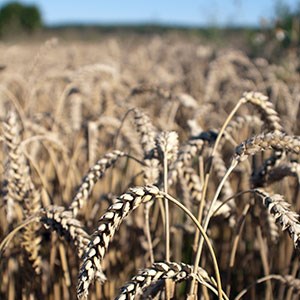Facts:
This project is funded partly by the Swedish Research Council Formas (2017-2022).

Spring wheat is an important crop in Sweden and to increase yield and nutrient content would have high economic impact. In NEWp we are doing research to achieve this goal.
Spring wheat is frequently grown in Sweden to produce bread-making flour, for which e.g. high protein content (and thus high nitrogen content) is important. Especially the short growing seasons under Swedish conditions require spring wheat varieties with improved nutrient use efficiency early in the growing season.
The overall aims is to identify phenotypic traits that are important for improving spring wheat yield and nutrient use under the cultivating conditions in Swedish agriculture; identify potential genetic resources for pre-breeding of more nutrient efficient spring wheat lines; and select parental lines for development of a mapping population in order to identify genetic markers useful for marker-assisted breeding.
Our working hypothesis is that spring wheat varieties with enhanced early root growth and greater root allocation early in the growing season develop higher leaf nitrogen (N) content during grain filling and are more nutrient efficient under the conditions in Sweden.
To address this hypothesis, this project combines screening of relevant phenotypic traits in c. 40 spring wheat genotypes under controlled conditions; the evaluation of a sub-set of lines with contrasting characteristics under field conditions (incl. genotype x environment interaction, GxE); and field validation at farm level.
This project brings together a commercial breeding company (Lantmännen Lantbruk), which will apply the project results in their ongoing wheat breeding program; expertise in crop science and breeding (SLU), root soil interaction (Rothamsted Research, UK), and plant phenotyping (Forschungszentrum Jülich GmbH, Germany); and stakeholders.
The project is organized around four work packages, which correspond to the four specific objectives of this project.

The structure of the packages (WP = work package, LantM = Lantmännen Lantbruk, FZJ = Forschungszentrum Jülich).
The starting point is the need for improved spring wheat material for the conditions in Sweden as articulated by a stakeholder (plant breeder Lantmännen Lantbruk, LantM), and includes the screening of a large number of promising genotypes for root, shoot and N economy traits at a phenotyping facility (Forschungszentrum Jülich, FZJ, Germany; WP 2); assessing a subset of those genotypes at field scale in terms of yield, yield stability (GxE) and nutrient economy (incl. nutrient deficiencies) at two field sites in Sweden (WP 3); and finally identifying wheat lines that could be used by the plant breeder as parents for a mapping population and genetic resources for pre-breeding of NUE-improved lines (WP 4).
This project is funded partly by the Swedish Research Council Formas (2017-2022).
Martin Weih, Professor
Department of Crop Production Ecology, SLU
martin.weih@slu.se 018-672543